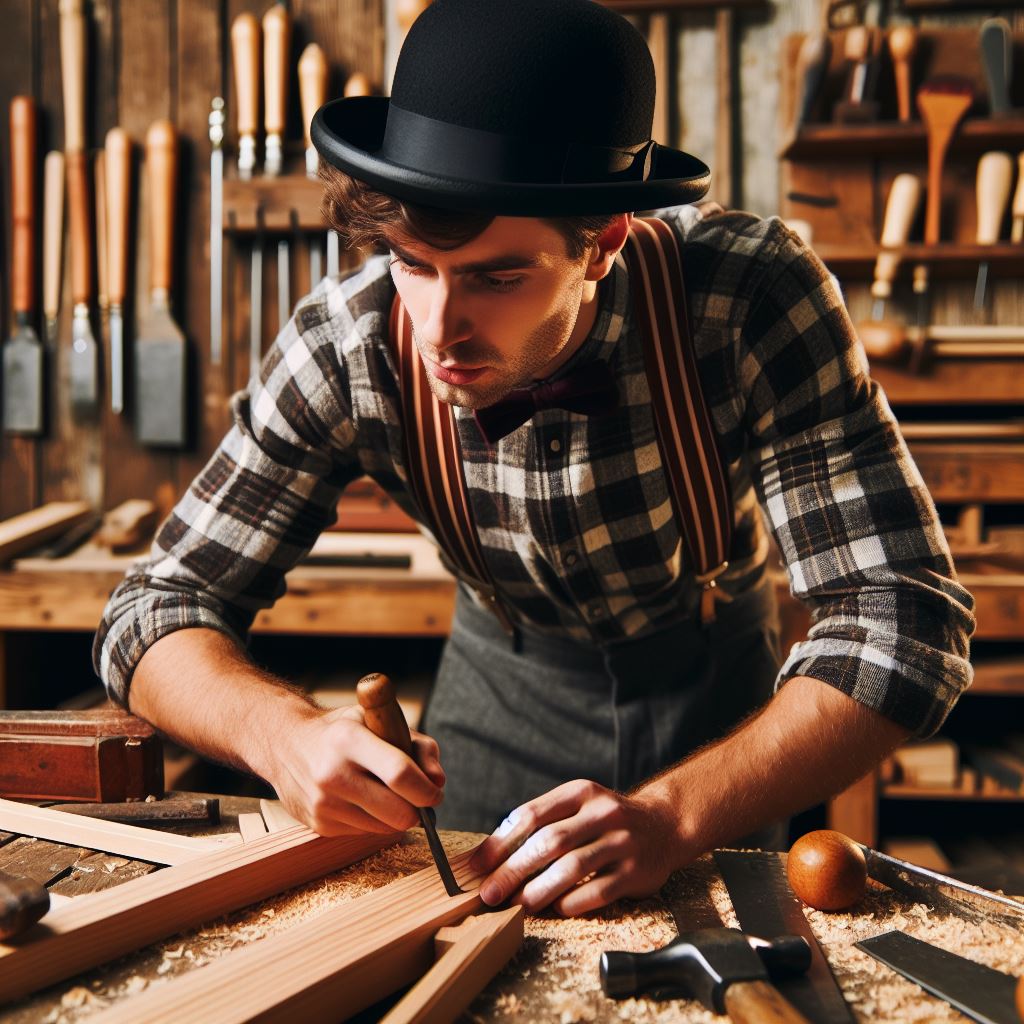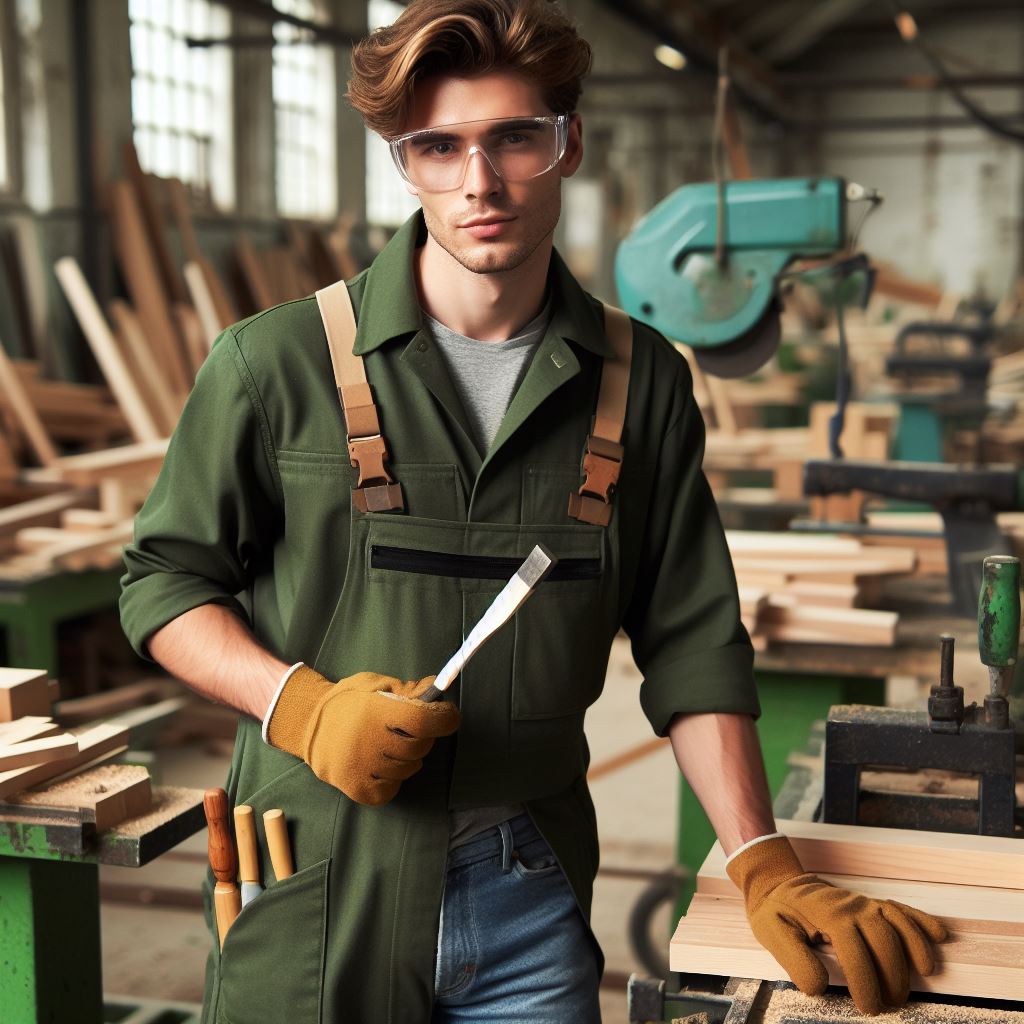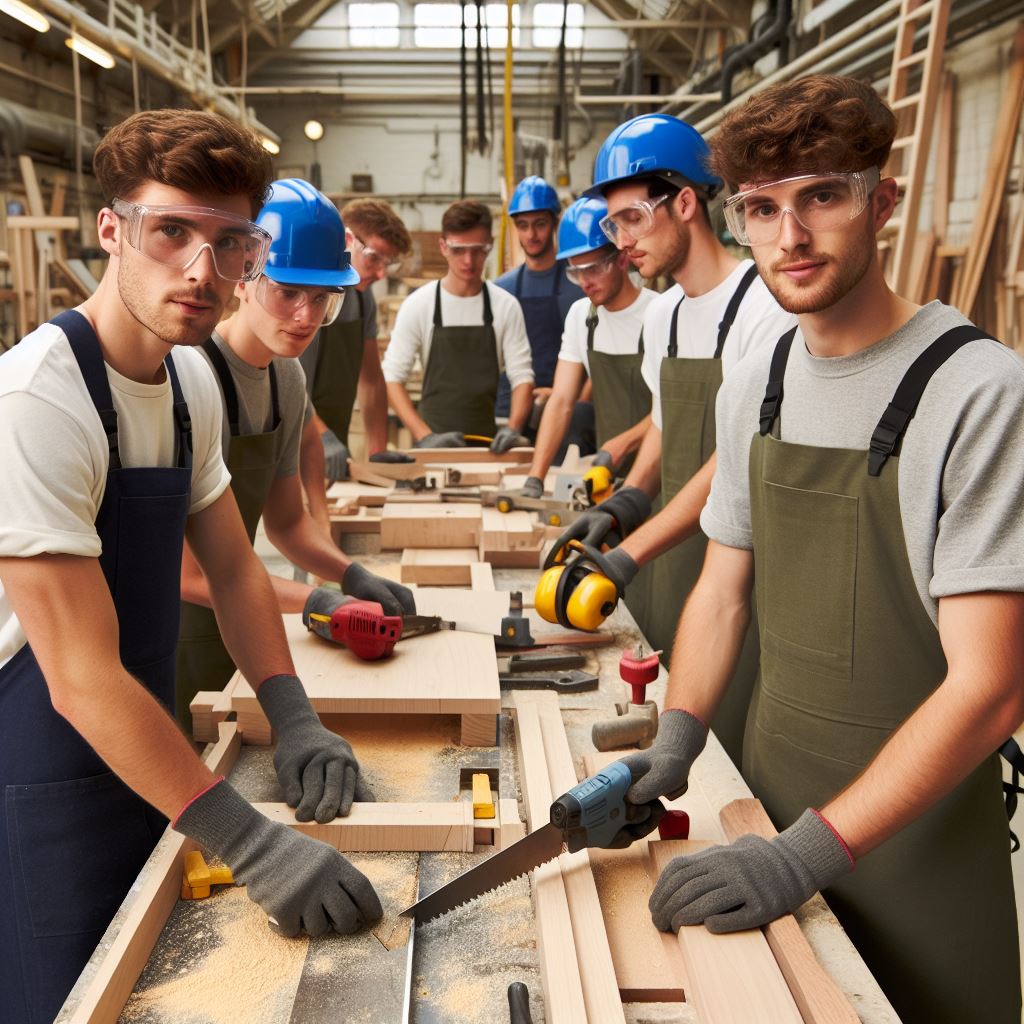Introduction
Welcome to the world of joinery, a skilled craft integral to the construction landscape in the UK. Joinery involves crafting wooden structures, fittings, and furniture with precision and expertise.
In the UK, joinery holds immense importance, contributing to both functional and aesthetic aspects of construction.
This blog section provides a comprehensive introduction to joinery. We will explore the definition of joinery, understanding its essence in woodworking and construction practices.
Delving into its significance in the UK, we’ll uncover how joinery enhances the quality and durability of structures.
The content unfolds with a closer look at joinery techniques, materials, and the role of joiners in construction projects.
We’ll delve into the artistry behind creating bespoke wooden elements that not only serve practical purposes but also add a touch of craftsmanship to architectural designs.
From the basics of joinery to its intricate applications, this section serves as a beginner’s guide.
Whether you’re an aspiring joiner or someone curious about the craftsmanship shaping the UK’s built environment, join us on this journey into the art and science of joinery.
History of joinery in the UK
Joinery, a craft with deep roots in the UK, has evolved from ancient civilizations to modern times. Skilled craftsmen, influenced by architectural styles, shaped intricate designs for homes, churches, and castles.
As architecture advanced, joinery techniques adapted, from refined Renaissance styles to the resurgence of Gothic in the Victorian era.
The 20th century brought technological influence, integrating computer-aided design (CAD) and CNC machinery.
Today, joinery remains vital, combining tradition and technology to create bespoke pieces for diverse projects.
Architectural styles, from Gothic to modern minimalism, have consistently influenced joinery.
The Arts and Crafts movement revived handcrafted techniques, and contemporary designs showcase sleek minimalism and new materials.
Joinery not only creates practical structures but also preserves the rich heritage of historic buildings through restoration.
Personalized UK Career Consulting
Receive tailored career guidance designed just for you. Get actionable steps and expert support to boost your career in 1-3 days. Take control of your career now.
Get StartedFrom castles to contemporary spaces, joinery reflects the enduring craftsmanship of UK artisans.
In general, joinery’s fascinating history, spanning ancient origins to modern adaptations, cements its integral role in the UK’s construction landscape.
Read: Apprenticeships: Gateway to Construction
Skills and qualifications required for joinery
To excel as a joiner, one must master fundamental skills. Proficiency in mathematics, especially geometry and algebra, is essential for precise measurements and calculations.
Joiners, with keen attention to detail, spot flaws in their work, requiring meticulousness in working with wood.
Excellent manual dexterity and hand-eye coordination are imperative, demanding proficiency in various hand and power tools.
Problem-solving skills prove vital as joiners tackle fitting challenges and errors, requiring critical thinking and effective troubleshooting.
While basic skills are crucial, apprenticeships and vocational training programs offer further education.
Apprenticeships, combining classroom instruction and on-the-job training, provide practical knowledge and hands-on experience.
Vocational training programs, focused on joinery, cover timber technology and manufacturing processes, fostering a deep understanding of the craft.
Certifications and qualifications enhance a joiner’s professional standing. Attainable through trade organizations, these credentials validate expertise through practical assessments and written examinations.
Joiners can also obtain qualifications, like diplomas and certificates, from vocational education institutions, showcasing specialized knowledge and a commitment to continuous learning.
In essence, joinery demands a skill set honed through education and hands-on experience.
Mastery of basic skills, complemented by apprenticeships and vocational training, is fortified by certifications and qualifications, culminating in a well-rounded and reputable joiner.
Your Dream Job Starts with a Perfect CV
Get a tailored CV and cover letter that captures your unique strengths and stands out in your industry. Let us help you make an unforgettable first impression.
Get StartedRead: Eco-Friendly Trends in UK Construction Work
Types of joinery work in the UK
Joinery work in the UK is diverse and involves various types of projects that require skilled craftsmanship.
Interior joinery: doors, windows, staircases, and furniture
Interior joinery focuses on creating and installing elements that enhance the aesthetics and functionality of a space.
Doors are an essential part of interior joinery, ranging from standard doors to intricate designs, such as panelled or glazed doors.
Windows also fall under the scope of interior joinery, including casement, sash, or bay windows, which require precision and attention to detail.
Staircases are another important aspect of interior joinery, with various designs available, such as spiral, straight flight, or curved staircases.
Furniture is another area of expertise within interior joinery, with craftsmen creating custom-made pieces that fit the client’s specifications.
Exterior joinery: gates, fencing, decking, and conservatories
Exterior joinery involves creating structures and features that enhance the outdoor areas of buildings.
Gates are commonly seen in exterior joinery, ranging from simple wooden gates to more intricate designs with decorative elements.
Fencing is another element of exterior joinery, providing privacy, security, and defining property boundaries.
Decking is a popular addition to gardens and outdoor spaces, providing a durable and attractive surface for relaxation and entertainment.
Conservatories, also known as sunrooms, are structures primarily made of glass and are designed to let in natural light and provide an indoor-outdoor living space.
Specialist joinery: restoration, bespoke projects, and architectural joinery
Specialist joinery encompasses unique and specific projects that require a high level of expertise.
Restoration projects involve the preservation and repair of historical or antique joinery, ensuring the continuation of their original design and craftsmanship.
Optimize Your LinkedIn for Success
Boost your LinkedIn profile with a professional bio, keyword-rich headline, and strategic recommendations that attract recruiters. Stand out from the crowd and get noticed.
Optimize NowBespoke projects are custom-made joinery creations tailored to the client’s requirements, often involving intricate designs and complex techniques.
Architectural joinery focuses on creating elements that integrate seamlessly with the building’s architecture, such as skirting boards, architraves, and moldings.
In review, joinery work in the UK encompasses a wide range of projects, from interior joinery involving doors, windows, staircases, and furniture, to exterior joinery including gates, fencing, decking, and conservatories.
Specialist joinery covers restoration projects, bespoke creations, and architectural joinery.
Each type of joinery work requires skilled craftsmanship and a keen attention to detail to deliver high-quality results that enhance the aesthetic and functionality of various spaces.
Read: Top Construction Projects Shaping the UK
Impact of joinery on the UK economy
The joinery industry plays a significant role in the UK economy, contributing to both the construction sector and the job market.
Skilled craftsmen and their expertise in traditional joinery techniques are crucial for preserving the UK’s rich heritage in woodworking.
- Joinery industry contributes significantly to the UK’s construction sector, driving economic growth.
- The demand for joinery products and services creates a ripple effect in other industries, boosting overall economic development.
- Joinery companies and craftsmen generate substantial revenue, contributing to tax revenues and national income.
- This sector also helps maintain a balance of trade by exporting high-quality joinery products to other countries.
Contribution of Joinery to the Construction Industry
- Joinery is an essential component of the construction industry, providing various timber-based products.
- Doors, windows, staircases, and flooring are essential elements of any building, where joinery expertise is indispensable.
- The skill and craftsmanship of joiners ensure the functional and aesthetic appeal of these elements.
- Quality joinery enhances the energy efficiency, security, and durability of buildings.
- Joiners also collaborate with other construction professionals, including architects and interior designers, to deliver bespoke solutions.
Job Opportunities and Career Prospects in Joinery
- Joinery provides abundant job opportunities, ranging from apprenticeships to experienced craftsmen.
- With the growing demand for timber-based products, the industry offers stable employment prospects.
- Joiners can work for established companies, start their own businesses, or contribute to heritage restoration projects.
- Skilled joiners often enjoy higher wages and have the chance to showcase their creativity and expertise.
- Continuous professional development and training programs help joiners advance their careers.
Importance of Skilled Craftsmen in Preserving Traditional Joinery Techniques
- Skilled craftsmen are crucial for preserving traditional joinery techniques and passing them down to future generations.
- These techniques, often rooted in heritage, contribute to the uniqueness and character of UK buildings.
- Skilled joiners play a significant role in renovating and maintaining historic structures, ensuring their authenticity.
- Their expertise ensures the restoration of original woodworking elements while using traditional methods and materials.
- Preserving traditional joinery techniques also bolsters the tourism industry, attracting visitors who appreciate craftsmanship and heritage.
Generally, the impact of joinery on the UK economy cannot be understated, as it contributes to the construction sector, provides job opportunities, and preserves traditional craft techniques.
Skilled craftsmen play a pivotal role in maintaining the country’s woodworking heritage while meeting contemporary construction needs.
With their expertise, joiners ensure the functional, aesthetic, and historical value of timber-based products in the UK.
Read: The Impact of Technology on Construction Jobs

Famous examples of joinery in the UK
1. Notable historical buildings with intricate joinery
- Westminster Abbey: This iconic landmark showcases exquisite joinery with intricate wood carvings and ornate details.
- Hampton Court Palace: The Tudor-style joinery in this palace includes paneling, moldings, and decorative elements.
- St. Paul’s Cathedral: The interior boasts remarkable joinery work, including pews, screens, and elaborate woodwork.
2. Modern structures showcasing innovative joinery work
- The Shard: This skyscraper in London features impressive joinery in its interior spaces, including custom-made wooden fixtures.
- The Scottish Parliament Building: It incorporates timber joinery methods to create unique architectural features and functional spaces.
- The Eden Project: This botanical garden in Cornwall uses timber joinery to construct its iconic geodesic domes.
3. Iconic furniture pieces crafted by UK joiners
- Chippendale furniture: Thomas Chippendale, a renowned joiner from the 18th century, created exquisite pieces like chairs, tables, and cabinets.
- Ercol furniture: Established in the UK in the 1920s, Ercol is known for its timeless designs and high-quality joinery.
- The Windsor Chair: This classic chair has been crafted by UK joiners for centuries, featuring a distinctive spindled back and solid wood construction.
Joinery, an esteemed skill in the UK for centuries, showcases excellence in historical buildings, modern structures, and iconic furniture.
Westminster Abbey’s intricate wood carvings and paneling, crafted by skilled joiners, captivate visitors.
Hampton Court Palace reflects Tudor joinery with exceptional paneling and decorative elements. St. Paul’s Cathedral, renowned for grandeur, features impressive joinery in its intricate woodwork.
The Shard in London seamlessly integrates joinery into contemporary architecture, highlighting UK joiners’ innovation.
The Scottish Parliament Building emphasizes modern joinery’s importance through unique architectural features.
The Eden Project’s geodesic domes, crafted using timber joinery, fuse nature and construction. Renowned joiners like Thomas Chippendale and Ercol have left a timeless legacy in furniture craftsmanship.
The classic Windsor Chair, crafted for centuries, showcases UK joiners’ excellence in spindled back and solid wood construction. UK joinery, a heritage of intricate woodwork, leaves an indelible mark in craftsmanship.
Conclusion
Joinery in the UK is a skilled craft with deep cultural and economic significance.
Throughout this blog post, we have explored the various aspects of joinery, including its history, techniques, and importance in construction and furniture making.
It is clear that joinery is not just a practical skill but also an art form, requiring a high level of expertise and attention to detail.
The joiners in the UK have honed their craft over centuries, passing down their knowledge from generation to generation.
By acknowledging the cultural and economic significance of joinery, we can appreciate the heritage and craftsmanship it represents. Joinery is not just about building structures or creating furniture.
It is about preserving a piece of history and creating something beautiful and lasting.
We encourage our readers to explore the world of skilled joinery, whether by learning the basics themselves or supporting local craftsmen.
By appreciating the artistry and skill behind joinery, we can help ensure its continued existence and pass it on to future generations.
So, next time you admire a beautifully crafted piece of furniture or walk through a stunningly constructed building, take a moment to appreciate the skilled joiners who made it possible.
Embrace the world of joinery and marvel at their craftsmanship.
[E-Book for Sale]
500 Cutting-Edge Tech Startup Ideas for 2024 & 2025: Innovate, Create, Dominate
$19.99 • 500 Tech Startup Ideas • 62 pages
You will get inspired with 500 innovative tech startup ideas for 2024 and 2025, complete with concise descriptions to help you kickstart your entrepreneurial journey in AI, Blockchain, IoT, Fintech, and AR/VR.




